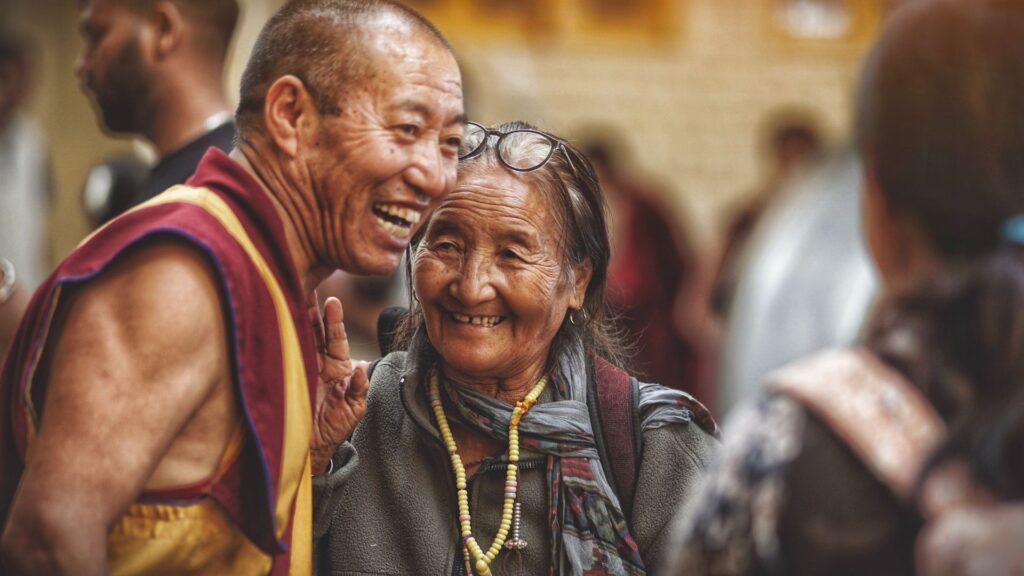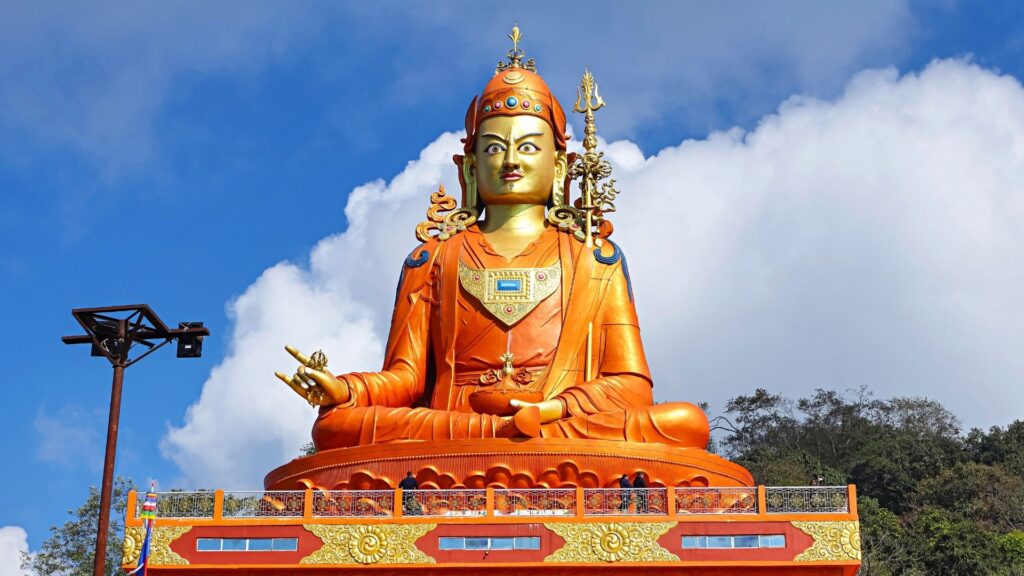By Sam Rippon
I found myself reflecting not just on the mechanics of taking a good photo, but on the intention behind each frame. It’s emphasised that the role of a photographer at a cultural event is not simply to record what’s visible, but to communicate what’s meaningful. With that in mind, I’ve begun imagining how I would approach photographing a Buddhist cultural celebration, a unique blend of stillness and ceremony, rich in both visual and spiritual layers.
Approach: Quiet Observation, Respectful Presence
Photographing a Buddhist cultural event requires humility and quiet observation. Buddhist gatherings often embody a deep sense of mindfulness, and I would aim to mirror that in my own presence. I’d move with care, avoiding intrusion, and take time to understand the flow of the rituals before lifting the camera to my eye.
Rather than trying to capture everything, I’d focus on the essence of the moment. I’d study how people interact with space, light, and each other. Silence is often as important as speech in Buddhist settings, and that silence has a visual quality too, subtle gestures, bowed heads, hands in prayer. These are the moments I’d aim to capture.
What I’d Prioritise: Ritual, Stillness, and Community
Ritual is central to Buddhism. Whether it’s the lighting of butter lamps, the chanting of sutras, or the offering of incense, each action is carried out with intention. These moments are rich with symbolism and would offer powerful visual opportunities, close-ups of hands in prayer, the gentle swaying of monks during a chant, or the rhythmic pattern of prostrations.
Stillness might sound like a contradiction in photography, but it can be profoundly expressive. Capturing a moment of deep meditation, for instance, can speak volumes. I’d look for those silent pauses in between movement, the quiet focus of a monk, the gentle breeze moving through prayer flags, or the flicker of a candle flame in a darkened hall.
Community is a vital part of any cultural gathering. Interactions between generations, between teachers and students, and between laypeople and monastics. These relationships, shown through smiles, shared tasks, or moments of mutual reverence, would help convey the social and emotional landscape of the event.

Narrative: Conveying Inner Peace and Sacred Connection
I’d aim to convey through my images inner peace, shared reverence, and spiritual presence. A Buddhist cultural event isn’t just about what people do, but how they are, how they move, how they sit, how they hold themselves in the moment. It’s about presence and intention.
My photo story would unfold like a quiet meditation: beginning with preparation, perhaps monks arranging an altar or laypeople arriving with offerings, building through the central rituals, and concluding with a return to stillness. The pacing of the images would echo the rhythm of the ceremony itself: unhurried, mindful, grounded.
Dream Event: Thimphu Tshechu, Bhutan
A multi-day festival held in the courtyard of the majestic Tashichho Dzong monastery-fortress. It is one of the most celebrated and photogenic religious events in the Himalayan world.
Why This Event?
Thimphu Tshechu is not only visually spectacular, but also spiritually profound. Dating back to the 17th century, it commemorates the teachings of Guru Rinpoche, the legendary saint who brought Vajrayana Buddhism to Bhutan. Monks and lay performers alike don vivid silk costumes and fearsome masks, dancing ritualised stories of good versus evil, life and death, and the path to enlightenment.
It is a living tradition where locals don their finest traditional dress, gather in the thousands, and engage in a spiritual celebration that blends spectacle with deep faith. The setting, the dramatic backdrop of Bhutanese architecture, fluttering prayer flags, and forested mountains, makes it feel almost otherworldly.
Visual Power and Challenges
The festival is bursting with colour, crimson robes, golden brocades, elaborate masks, and swirling prayer flags. Dancer’s leap and spin in synchronised harmony, while massive thangkas (sacred religious paintings) are unfurled at dawn. The visual drama is stunning.
But with the visual intensity comes difficulty: the rapid movement of masked dancers, unpredictable lighting in outdoor and indoor spaces, and large crowds can be overwhelming. Navigating respectfully among devout locals and tourists alike would require patience and cultural sensitivity. Timing would be everything, capturing the arc of a dancer’s movement, the precise moment when emotion shows on a face, or the early-morning light filtering through incense smoke.
Final Reflection
Photographing a Buddhist cultural event would be less about spectacle and more about sensitivity. Yet in a place like Bhutan, it’s possible to witness both: the awe-inspiring and the deeply spiritual in a single frame. It would be a chance to explore themes of impermanence, beauty, faith, and tradition, not just through what is seen, but through what is felt. And in a setting like Thimphu Tshechu, I would aim to capture images that resonate with both the eye and the soul.

This article is part of the practical work carried out by students on the Master’s Degree in Travel Journalism at the School of Travel Journalism.

